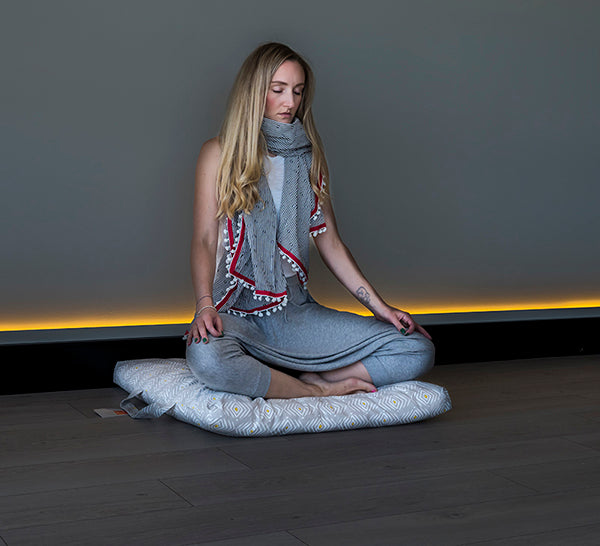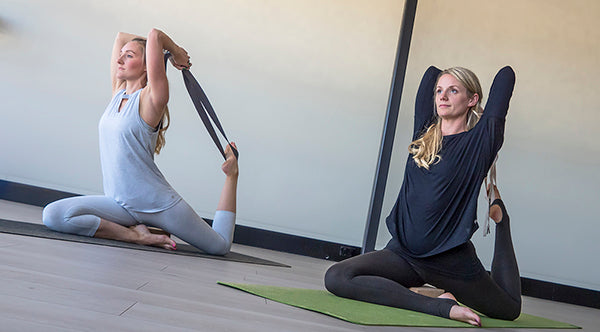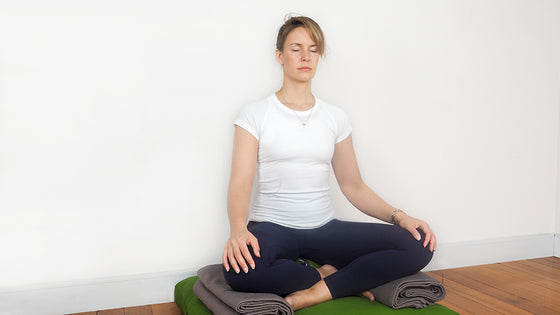- Ergonomic Products
- Ergonomic Furniture
- Yoga
- Meditation
- Pilates
- Air Treatment
- Blog
- Resources
- About Us
- Wholesale
- Ergonomic Products ▼
- Ergonomic Furniture ▼
- Yoga ▼
- Meditation ▼
- Pilates ▼
- Air Treatment ▼
- Blog
- Resources ▼
- About Us
- Wholesale
- Sign in
How to choose the right yoga class for you.
OK, you’ve got your mat, a fancy new pair of stretchies and now what? It’s time to put your money where your ‘asana’ is and try a yoga class! But with all the different styles and class descriptions out there, how do you choose? We’ve put together a simple guide to several popular yoga styles to help you, plus a list of considerations so you can choose the right class for you and begin your yoga adventure.
Hatha is actually a very broad term, covering any type of yoga that teaches the physical aspect of the practice. Kind of confusing for a newbie, right? Yoga studios will generally list and define a hatha yoga class as a classical style, with plenty of space between mostly static poses. With Hatha, you’ll gain a solid understanding of the basics, taught at a slow to medium pace.

Iyengar yoga places emphasis on correct alignment and precision in each yoga pose. The founder of this style, BKS Iyengar, introduced the use of props such as wooden blocks, bolsters, straps and chairs to make the practice adaptable for all body types, levels of fitness and special conditions. This style is particularly suited to anatomy geeks and those that enjoy attention to detail.
Bikram yoga takes place in a hot room set at or above body temperature. The heat is said to assist detoxification, facilitate stretching, boost mental strength and challenge physical endurance. Participants complete a specific sequence of 26 poses and 2 breathing exercises in a 60-90 minute class. Will you get hot and sweaty? You bet!

Kundalini refers to an energy source that resides at the base of the spine. A kundalini practice is designed to tap into and engage this energy, drawing practitioners to deeper levels of happiness, health, and spiritual awareness. A typical class also includes chanting, meditation and dynamic breathing techniques.
Restorative yoga would definitely be listed as dessert if we described each of these styles as a restaurant menu item! Long holds in passive floor-based poses, with the draped over squishy, comfortable props - this is a delicious, quiet practice designed to activate the body’s natural healing mechanisms to leave you feeling deeply relaxed.

Ashtanga is a strong, physically demanding style which promotes coordination of the breath with an almost non-stop flow of movement. The Ashtanga system is highly structured, with students progressing through a set series of poses to build awareness and strength before embarking upon the next series.
Vinyasa classes focus on coordinating the breath with a dynamic flow of movement from posture to posture. This style may also be referred to as Flow Yoga or Power Yoga and is inspired by the practice of Ashtanga yoga.
Yin is a good choice for those craving big, juicy stretches all over! Yin poses target the connective tissues in the body, such as the ligaments, bones, and even the joints that normally are not exercised very much in a more active style of yoga. You’ll leave a Yin class feeling super-stretched and super-chilled!
Acro is a playful and energetic style where traditional yoga poses are given an exciting acrobatic twist! Cultivating a sense of community and trust is key in Acro yoga - you’ll work as part of a team consisting of a base position, spotter and flyer. Expect to push your boundaries, work hard and unleash your inner child!
Dru yoga is soft and graceful, combining flowing movement with breath awareness and visualisation. Dru sequences are called Energy Block Releases and aim to rejuvenate participants in body, mind and spirit.
Tips for starting out.
How was your first yoga class experience? Let us know in the comments.


